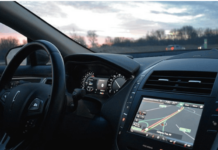Ever thought about turning the tables where your car isn’t a cost but an income source? Are you intrigued by the concept of making money with Uber? Well, this guide is here to satisfy your curiosity.
This comprehensive analysis will unveil the real deal about Uber and how to utilize it as an income stream optimally. Stay tuned as we peel back the layers of this fascinating opportunity, delivering essential tips and tricks to bolster your Uber earnings.
Decoding the Uber Platform: A Comprehensive Guide for Drivers
At its core, Uber is a ride-hailing app connecting drivers with riders. As an Uber driver, you’ll use the Driver App, a tool built to facilitate every aspect of the driving experience. This app is your dashboard, navigating tool, transaction manager, and communication device.
When you log into the app, you’re signalling your availability to accept ride requests. Uber’s algorithm matches nearby riders to drivers based on proximity, reducing wait times and ensuring efficiency. Once checked, the app provides the rider’s location and destination and suggests the best route.
Exploring Uber Services: Implications for Driver Earnings
Diving into the world of Uber, you’ll encounter various ride options that directly impact your earning potential. So let’s delve into these services and uncover what they mean for your bottom line.
- UberX is the most common service, allowing drivers with a 4-door vehicle to offer rides for up to four passengers. While UberX rides are priced lower than other Uber services, the demand is high, potentially leading to more rides.
- UberXL caters to larger groups, accommodating up to six passengers. The prerequisites include having a larger vehicle, such as a minivan or SUV. UberXL rides are priced higher than UberX, meaning more substantial earnings per ride, but they may have lower demand.
- UberBLACK represents Uber’s luxury service. It requires drivers to have a high-end, black, 4-door vehicle; professional licensing is necessary for some cities in towns. While UberBLACK rides come with a premium price tag, leading to higher earnings per trip, the demand is not as consistent as UberX.
- UberPOOL (where available) allows riders going in the same direction to share the ride, potentially increasing your earnings per trip. However, it can be more time-consuming and complex to manage.
Understanding these services and their demands in your local market is critical to optimizing your earnings strategy with Uber.
Critical Prerequisites for Entering the Ride-Hailing Industry: Legal, Personal, and Vehicle Requirements
Pivoting towards the ride-hailing industry as a driver entails meeting specific legal and personal stipulations and particular vehicle requirements. Let’s unpack these essential prerequisites.
Legal and Personal Requirements
Initiating your journey in this industry necessitates fulfilling various legal and personal criteria. Firstly, you must meet the minimum driving age in your city and possess a valid driver’s license. In addition, a clean driving record is indispensable, typically devoid of significant violations in recent years.
Aside from the legal aspects, ride-hailing companies often require potential drivers to pass a background check to ensure the safety of their customers. Unfortunately, this check delves into your criminal record, with serious offences potentially disqualifying you from becoming a driver.
Vehicle Requirements
The requirements for your vehicle vary based on the ride-hailing service you intend to provide. For standard services, a 4-door car in good condition, with a certain minimum age, usually suffices. However, services catering to larger groups or premium customers may necessitate more specific requirements, like larger, newer vehicles or luxury models in particular colours.
Also, to provide a comfortable experience to customers, maintaining your vehicle’s cleanliness and functionality is a must. But remember, meeting these requirements is just the first step. The key to success lies in understanding your local market and optimizing your strategy accordingly.
The Earnings Breakdown
Unveiling the mystery behind the earnings of ride-hailing services can be crucial for drivers seeking to maximize their income. So here’s a bullet-point breakdown of how these platforms calculate driver earnings:
- Base Fare: This is the flat fee charged at the start of every ride. It varies depending on the city and the type of service being provided.
- Per-Minute Rate: This is the charge for the time the ride takes. The longer the ride duration, the higher the earnings from the per-minute rate.
- Per-Mile Rate: This is the fee for the distance travelled during the ride. Longer distances result in higher earnings from the per-mile rate.
- Booking Fee: This fee is charged to riders on every trip to cover administrative costs. However, it’s important to note that this doesn’t affect the driver’s earnings.
- Surge Pricing: During periods of high demand, the platform implements surge pricing, increasing rates and potentially boosting driver earnings.
- Tips: Riders can give information directly to drivers through the app or in cash; these tips contribute 100% to driver earnings.
Grasping Surge Pricing: Its Influence on Ride-Hailing Earnings
Surge pricing, a concept synonymous with the ride-hailing industry, often triggers questions. So let’s demystify this term and examine its impact on driver earnings.
In essence, surge pricing is a dynamic pricing strategy employed by ride-hailing platforms during periods of high demand. When the number of ride requests exceeds the number of available drivers in a specific area, the platform increases the prices to encourage more drivers to get on the road and meet the demand.
This dynamic pricing mechanism can significantly impact your earnings. Here’s how:
- Increased Ride Fare: The main effect of surge pricing is an increase in the overall fare for the ride. As a result, drivers can earn more for the same trip compared to non-surge periods.
- The Incentive to Drive: Surge pricing incentivizes drivers to operate in areas of high demand, thereby increasing their potential earnings.
- Higher Demand: It also tends to increase during special events or bad weather, leading to higher demand and, thus, higher potential earnings.
Decoding the Impact of Ratings on Earnings in the Ride-Hailing Sector
In the landscape of ride-hailing services, ratings play a crucial role. Although it might seem that ratings are purely about reputation, their influence extends to the earning potential of drivers. Let’s explore how.
Primarily, ratings serve as a trust factor between drivers and riders. A high rating can increase the likelihood of securing ride requests, especially in busy areas or during peak hours. Conversely, a low rating can deter potential riders, leading to fewer ride requests and lower earnings.
Furthermore, consistently high ratings can sometimes unlock access to premium services. These services cater to a more discerning clientele and generally carry higher fares, thus boosting a driver’s earning potential.
Lastly, some platforms have introduced reward programs that offer benefits such as earning boosts or priority dispatch to high-rated drivers. Participating in such programs can significantly improve earnings.
Mastering the Ride-Hail Economy: Actionable Strategies for Boosting Your Income
Rising to the top of the ride-hail earnings chart doesn’t happen by chance; it’s an art that requires understanding the industry’s nuances and deploying some tested strategies. Let’s delve into some proven tactics that can help you maximize your earnings:
Mastering Peak Hours and Locations
Crafting a strategic plan around when and where to drive is a proven method for maximizing earnings in the ride-hailing industry. Here’s how to go about it:
- Peak Hours: Driving during peak hours, usually during morning and evening commute times, can yield higher earnings. This is when demand is high, and there’s a potential for surge pricing. Late nights on weekends can also be lucrative due to demand from people enjoying the nightlife.
- Events and Hotspots: Concerts, sporting events, festivals, and other large public gatherings are often accompanied by increased ride demand. Positioning yourself near these event locations before and after they occur can lead to more ride requests.
- Business Districts and Transport Hubs: Busy business districts during lunch and rush hours, airports, train stations, and bus terminals are also hotspots for ride requests.
- Understand Local Patterns: Every city has unique patterns of demand. Understanding these can help you plan your driving schedule for maximum earnings. For example, if a particular neighbourhood has a bustling nightlife, it might be worth driving in that area on weekend nights.
Remember, planning your driving strategy based on time and location can significantly impact your income.
Harnessing Dynamic Pricing in the Ride-Hailing Industry
Here are some strategic tips to effectively utilize this pricing model:
- Stay Alert: Keep an eye on the ride-hailing app’s alerts and updates about dynamic pricing in your area. This will help you plan your availability and location strategically.
- Know the Patterns: Certain times and locations are more prone to dynamic pricing due to higher demand. These could be during peak commute hours, special events, or in nightlife hotspots. Understanding these patterns can help you position yourself optimally.
- Don’t Chase Surges: While it can be tempting to head to a surge area as soon as you see it, remember that many other drivers will have the same idea. By the time you reach, the surge might have subsided. Instead, learn the trends and be in the right place at the right time.
- Balance Surge Rides With Regular Fares: Though surge rides can be more profitable, balancing them with regular fares is essential to ensure consistent earnings throughout your shift.
Boosting Your Income: The Critical Role of Maintaining High Ratings
A driver’s reputation, quantified through these ratings, significantly impacts earnings potential. Here’s why maintaining high ratings is vital for your wallet:
- Trust Factor: Riders are likelier to choose drivers with high ratings, leading to more ride requests and, hence, higher earnings. Conversely, a low rating can discourage potential passengers.
- Access to Premium Services: Some ride-hailing platforms open their premium services to top-rated drivers, which usually carry higher fares.
- Rewards and Incentives: Certain platforms offer tips and incentives to their highly-rated drivers. This could be in bonuses, priority dispatch, or other benefits that enhance your earnings.
- Consistent Business: With high ratings, you’re likely to have repeat customers. This means consistent business and, consequently, stable earnings.
Exploiting In-App Features: A Goldmine for Enhanced Earnings
These apps are not just tools for finding passengers; they are teeming with features that can help you increase your income if used strategically. Let’s look at some ways you can leverage these features:
- Real-time Heat Maps: These maps highlight areas with high real-time demand. Being in the right place at the right time can lead to more ride requests and higher earnings.
- Dynamic Pricing Alerts: Many ride-hailing apps alert drivers to areas with dynamic pricing. Staying alert to these notifications can help you capitalize on high-demand periods.
- In-App Navigation: In-app navigation ensures efficient routes, saving time and fuel costs. Quicker rides can lead to more trips and, thus, higher earnings.
- Quests and Bonuses: Some ride-hailing platforms offer quests or bonuses for completing a certain number of trips within a specified period. Participating in these can boost your earnings.
- Rider Preferences: Certain apps allow riders to set preferences for temperature or music. Meeting these preferences can lead to higher ratings, influencing your earnings.
In the journey to boost your ride-hailing earnings, it’s crucial to understand the fiscal side of things. Yes, there are expenses associated with being a ride-hailing driver, and you will pay taxes on your income. However, understanding these aspects can help you plan better and even find ways to increase your net earnings.
Grasping the Fiscal Aspects of Uber: Costs and Tax Implications
There are costs involved in providing ride-hailing services that drivers must consider. They can generally be categorized into:
- Vehicle Expenses: These include fuel, maintenance, and depreciation. All of these will impact your net earnings.
- Insurance: You’ll need commercial or ride-hail insurance, which is typically more expensive than personal auto insurance.
- Registration and Licensing: Depending on your region, there may be costs associated with obtaining the necessary permits and licenses.
- Miscellaneous: Costs such as car cleaning, mobile data for your ride-hailing app, passenger refreshments, etc., also add up over time.
Navigating Tax Deductions to Maximize Take-Home Earnings
The silver lining of these costs? Many of them are tax-deductible, which can reduce your taxable income and increase your take-home earnings:
- Vehicle Expenses: You can deduct vehicle-related expenses, such as mileage, fuel, maintenance, and even depreciation in some cases.
- Insurance and License Fees: You can typically deduct the cost of insurance and any fees related to obtaining necessary licenses.
- Home Office: If you handle administrative tasks from a home office, you may be eligible for a home office deduction.
- Mobile Expenses: The cost of your phone and data plan can also be deducted, as they are necessary for using your ride-hailing app.
Remember to keep accurate and detailed records of all your expenses. In addition, it’s always a good idea to consult with a tax professional to understand your eligible deductions and how to claim them effectively.
Steps Towards Becoming a Driver With Ride-Hailing Platforms
Stepping into the world of ride-hailing as a driver requires several vital steps. Here’s a generalized guide to kick-start your journey:
- Online Application: Begin your journey by visiting the official website of the ride-hailing service and completing the online driver application form.
- Document Submission: Prepare and submit all necessary documents. This usually includes a valid driving license, proof of residency, and vehicle insurance. Some platforms may require additional documentation, so check the guidelines carefully.
- Vehicle Inspection: Your vehicle must meet specific standards set by the ride-hailing platform. An inspection will likely be required to confirm your vehicle’s safety and condition.
- Background Check: To ensure the safety of passengers, a background check is typically conducted on all potential drivers.
- Driver Onboarding: Once all checks are cleared, you’ll need to complete an orientation or training, often available online.
Looking Beyond the Known: Potential Alternatives to Traditional Uber
The gig economy opens numerous avenues for individuals looking to supplement their income. While ride-hailing has gained massive popularity, it is not the only option available. If you’re considering alternatives, here are five paths you might want to explore:
- Delivery Services: Many companies offer delivery opportunities, whether groceries, food, or packages. You still use your vehicle to earn money but transport goods instead of passengers.
- Car Renting: If you own a car but prefer not to drive it for income, consider renting it out. Some platforms connect car owners with those who need a vehicle for a short period.
- Rideshare Advertising: Some companies pay drivers to display advertisements on their cars. This is a more passive income source as you earn just by driving, whether you have passengers or not.
Exploring Options: Five Alternative Ride-Hailing Services Worth Considering
While one platform might be the leader in a specific region, other ride-hailing services offer competitive benefits. Here are five alternatives that might pique your interest:
- Lyft: A robust contender in many markets, Lyft is known for its friendly culture and often rewards its drivers with bonuses.
- Ola: Originating from India, this platform rapidly expands internationally, offering drivers a new client base to tap into.
- Didi Chuxing: As a global leader originating from China, Didi offers various transport services, expanding potential income streams for drivers.
- Bolt (formerly Taxify): Known for its lower commission rates, Bolt is an attractive option for drivers keen on taking home a more significant chunk of their earnings.
- Via: Operating in select cities, Via focuses on shared rides (multiple passengers per trip), potentially increasing driver earnings.
Final Thoughts: Harnessing Tips and Tricks to Maximize Your Uber Earnings
In conclusion, maximizing your Uber earnings involves understanding the platform’s dynamics, strategic planning, and making the most of in-app features. The tips and tricks we’ve discussed can guide you in navigating this journey more effectively.
Always remember the perfect balance between knowledge of peak times, strategic usage of surge pricing, maintaining high ratings, and cleverly using in-app features can significantly impact your earnings. Further, a solid grasp of the financial aspects can aid you in making informed decisions about expenses and tax deductions.
Ultimately, the key to unlocking your earning potential lies in these tips and tricks, combined with your dedication to providing an excellent ride experience.






